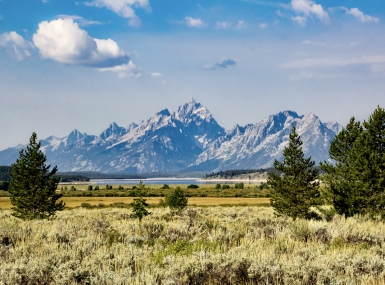House resolution disapproves BLM Planning 2.0 rule; next stop, the Senate
Upcoming Events
Related News
On Feb. 8, the House of Representatives passed H.J. Res. 44, disapproving of the Bureau of Land Management’s (BLM) Planning 2.0 rule, by a vote of 234–186. The legislation begins the process of rolling-back Planning 2.0 under procedures outlined in the Congressional Review Act (CRA).
Legislation disapproving Planning 2.0 is supported by over 60 groups representing a broad cross-section of public lands stakeholders. On Jan. 26, NACo joined with 23 state associations of counties, national, regional and state level organizations representing public lands stakeholders in sending a letter urging disapproval of the Planning 2.0 Rule.
In December of 2016, the BLM released its final Resource Management Planning rule, or Planning 2.0. Throughout the rulemaking process, counties expressed concern that the rule, as written, could dilute county input into land management decisions and hinder local government consultation and collaboration with the BLM.
As co-regulators and intergovernmental partners in the BLM’s land use management mission, counties have a significant interest in providing BLM with the most meaningful information and analysis possible to help craft BLM regulations and land use and resource management plans.
BLM’s Planning 2.0 rule was published on Dec. 13, 2016 and went into effect on Jan. 11. Planning 2.0 establishes the processes under which the BLM will develop its Resource Management Plans (RMPs). RMPs set parameters to define approved uses and actions across over 245 million acres of surface land and over 700 million acres of subsurface minerals currently under BLM management. The land use planning decisions made under Planning 2.0 could have a significant impact on local economies and BLM lands alike.
CRA procedures empower Congress to advance legislation rolling back federal rules like Planning 2.0, providing another opportunity for BLM, counties and public lands stakeholders to work together to improve planning regulations and ensure robust coordination with local governments. CRA legislation must pass both chambers of Congress and be signed by the president. Following passage in the House, H.J. Res. 44 is now pending further consideration in the Senate.
NACo has been engaged throughout the Planning 2.0 process to ensure local government involvement is at the forefront of BLM resource management planning and that local governments were given the time necessary to analyze the implications of the substantive regulatory changes presented in the Planning 2.0 rule.
After securing an extension of the initial comment period, NACo submitted comments to BLM on the proposed rule.NACo has also hosted numerous webinars and forums with BLM staff and county officials to provide other opportunities for the county voice to be heard and will continue to work with counties and the BLM to ensure local government engagement is at the forefront of BLM resource management planning.
Attachments
Related News

House Passes Historic Outdoor Recreation Legislation
The U.S. House passed the bipartisan EXPLORE Act (H.R.6492) on April 9 to boost outdoor recreation opportunities on public lands and aid local economies

